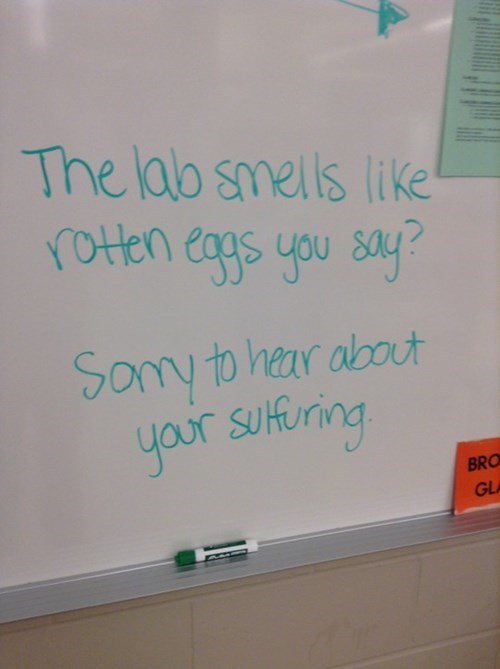Please Subscribe, Like, Comment, And Donate! Stay Tuned For Bloopers From This Episode On April 22, 2017.
Please subscribe, like, comment, and donate! Stay tuned for Bloopers from this episode on April 22, 2017. This was the last episode of this season. Keep an eye out on the facebook page for more information on Season 2. Please comment below for any experiments or simple science you'd like us to explain while drunk! Starring: Candice Lola Directed by Rebecca Berger Produced by Rebecca Berger and Candice Lola Written by Candice Lola Editing, Color, Sound Design by Rebecca Berger Animation by Rachael K McDonald Links: Music: http://ift.tt/1JICaNj and http://ift.tt/2lquxdO http://ift.tt/2lINlQJ http://ift.tt/2lqtjzr http://ift.tt/2lIL08B http://ift.tt/2lqvuCQ (Donations are always welcome!) http://ift.tt/2lITyw7 http://ift.tt/2lqvQJO
More Posts from Drunkscience4u and Others
Seer of Seers Sage of Sages Prognosticator of Prognosticators Weather Prophet Extraordinary
So reads the official title of Punxsutawney Phil, the world’s most famous weather-predicting groundhog/woodchuck/marmot/whistle pig (yes, they are, in fact, all the same animal… surprises abound in the world of meteorological mammals).
Phil hails from the town of Punxsutawney, PA, where every year on February 2, a group of grown men sporting top hats and waxed mustaches pull him out of a box and ask him when winter will end. I can never keep straight whether seeing the shadow means spring will come early or if we’ll have a long winter, but this doesn’t really matter, since rodents are not good weather prediction tools.

Despite being about as reliable as a coin flip, Phil is joined in this annual tradition by more than a dozen North American groundhogs like Shubenecadie Sam, General Beauregard Lee, and Wisconson’s humbly-named Jimmy the Groundhog, seen here:

Surprise! Groundhogs can bite! And I would too, if you forcibly removed me from my warm, comfy house, held me aloft in the frigid air in front of thousands of gaping onlookers and flashing lights and asked me about a subject in which I have no expertise.

Rodents might not be real educated in the fields of meteorology and astronomy, but humans are! We’ve got Earth’s orbital mechanics and their corresponding effect on annual temperature cycles down to a literal science. We smart. Just look…

I dug into the science of seasons this week, and I discovered that our system of defining “winter” and “summer” and “spring” and “autumn”, at least the way that most of us non-meteorologists think of them, doesn’t really make sense when you compare it to the weather.

You might already know that we define “winter” or “summer” based on Earth’s position in relation to the sun, namely the solstices. This makes the seasons easy to keep track of, but for most of us these dates are unreliable, illogical, and remarkably disconnected from the actual weather. The little boxes on your calendar that say “First Day of Winter”, “First Day of Spring” and so on don’t line up very well with how cold or hot it is outside.
Unfortunately, that’s what happens when you try to apply a single calendar to an entire planet… could there be a better way?
You can learn the rest of the story by watching this week’s It’s Okay To Be Smart up at the top of this post. Enjoy!








This Black History Month, let’s celebrate the first African-American woman who traveled in space.

Let’s celebrate black people, who made history! This is so important to know that some of us didn’t give up and were strong enough to achieve something great like this. These stories are inspirational , but we don’t see them in our history books. Even though she was told women can’t go into space, she never stopped believing in her dreams.
“As a little girl, I was excited, and people kept trying to explain to me why women couldn’t go into space,” Jemison said, according to the university’s student newspaper, The Plainsman. “I always thought they were full of it.”
She’s the role model for every black kid, who has big dreams! She is a living proof everything’s possible!
#BlackHistoryMonth


Hold your nose at this science pun.

The ancestor of all vertebrates, including fish, reptiles and humans was a big mouth but apparently had no anus.
The microscopic creature named Saccorhytus, after the sack-like features created by its elliptical body and large mouth, lived 540 million years ago. It was identified from microfossils found in China.
“To the naked eye, the fossils we studied look like tiny black grains, but under the microscope the level of detail is jaw-dropping,” says team member Simon Conway Morris, of the University of Cambridge, in the UK.
Researchers believe it was about a millimetre in size, lived between grains of sand on the sea bed and had a large mouth relative to the rest of its body.
They also think the creature was covered with a thin, relatively flexible skin, had some sort of muscle system which could have made contractile movements and allowed it to move by wriggling.
Continue Reading.


Hey guys, we made a flyer that you can print out and post in your places of choice! http://ift.tt/2jNXMm3
-
 lordrebeccasama reblogged this · 8 years ago
lordrebeccasama reblogged this · 8 years ago -
 insaneandlovingit liked this · 8 years ago
insaneandlovingit liked this · 8 years ago -
 wizardmann liked this · 8 years ago
wizardmann liked this · 8 years ago -
 yoourmoove liked this · 8 years ago
yoourmoove liked this · 8 years ago -
 not-thesheriffssecretpolice reblogged this · 8 years ago
not-thesheriffssecretpolice reblogged this · 8 years ago -
 drunkscience4u reblogged this · 8 years ago
drunkscience4u reblogged this · 8 years ago
The official page of Drunk Science! An enthusiastic host performs simple experiments and then humorously explains the science behind the result, all while visibly drunk.
126 posts


